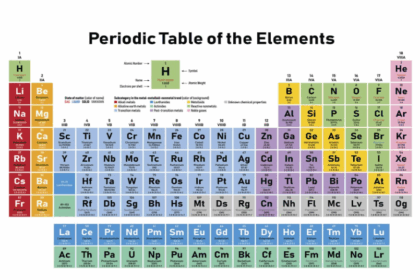Rising wages and fuel expenses are exacerbating defense companies’ challenge of controlling costs for weapons and systems to fit the Pentagon’s budget.
The U.S. fiscal 2022 defense budget request of $715 billion assumed inflation of 2.2% when it was made last year. Actual prices have run well ahead of that projection, however. Fuel was forecast to rise 10% during the fiscal year, but crude oil prices are up about 55% over the past 12 months.
Escalating costs for materials, transportation and labor are bringing the pressures of inflation to defense companies. They have historically been protected from some price increases via so-called cost-plus deals that pass much of the burden to the Pentagon, the U.S. defense sector’s biggest customer.
Protection this time has been diluted by delays in approving a budget for fiscal 2022 and in announcing one for the following year, according to budget experts. That has left contracts and spending based on an inflation rate of 2.2% while defense companies are dealing with a 7.5% annualized rise in the consumer-price index in January.
Raytheon Technologies Corp. finance chief Neil Mitchill said his company’s 2022 guidance built in $150 million in “unexpected” inflation to reflect recent price trends.
The breadth and pace of recent cost increases mean the Pentagon’s buying power will be reduced unless Congress agrees to boost funding, budget experts said. For example, the defense department buys around 4.6 billion gallons of fuel a year, with the run-up in oil prices adding more than $1 billion in unforeseen expenses.
“When you’re dealing with large numbers, it’s a huge difference,” said Lou Crenshaw, a retired Navy admiral who now runs his own defense consulting business. “We’re losing probably 4% of our buying power.”
Defense budgets are set and approved annually by Congress. That makes inflation estimates especially important, since price changes in the broader economy that feed through to the Pentagon have to be digested long after budgets have been set.
“This is going to play out over not only months, possibly years,” said Mike McCord, the Pentagon’s chief financial officer.
The Pentagon declined to comment on potential program cuts and trade offs ahead of the release of the fiscal 2023 budget request, expected as early as next month.
Mackenzie Eaglen, a senior fellow at the American Enterprise Institute, estimated the combination of inflation and the temporary budget that the Pentagon has faced since October is costing the defense department $4 billion to $6 billion a month beyond planned budgets.

Defense contracts awarded to companies such as Lockheed Martin include long-term deals for weapons programs expected to be in place for decades.
Photo: Benoit Tessier/REUTERS
Defense contracts awarded to companies such as Raytheon, Lockheed Martin Corp. and Boeing Co. include long-term deals for weapons programs expected to be in place for decades. Contracts for fuel, food and medical treatment tend to be shorter term, covering a year or so.
Around 70% of the Pentagon budget is spent on services rather than hardware. The Pentagon typically gives priority to spending on troop numbers, flying and sailing to preserve military readiness, according to budget experts. That makes fewer weapons purchases the most likely outcome of the reduced buying power, they said.
Rising fuel, labor and material costs are going to lead to difficult trade-offs in spending on research and weapons, said Todd Harrison, director of Defense Budget Analysis at the Center for Strategic and International Studies. He said that could lead to some programs being culled or suspended.
He said the next defense budget request will be closely scrutinized for the assumptions made about inflation over the next five years, given they come directly from the Biden administration. “The markets are going to be looking at that number,” he said at a seminar hosted by the CSIS.
Defense companies do have some insulation from inflation. Around a third of the Pentagon’s biggest deals are agreed on a cost-plus basis, with the price set and the extra expense borne by the Pentagon.
Contracts that, for example, allow Lockheed Martin to buy aluminum and titanium for jet fighters years in advance can shield defense companies from inflation, allowing them to order materials and potentially lock in supplies when prices are low.
Such an arrangement can work against defense companies, though, when new long-term contracts need to be agreed upon when prices are high. That potentially leaves companies saddled with years’ worth of purchases of expensive steel, aluminum and other materials.
Military contractors said they are wrestling with the effects of the current 40-year high in inflation in some current negotiations with the Pentagon.

F-35 combat jets represent the world’s costliest defense program.
Photo: Wilson Ring/Associated Press
Lockheed Martin, the largest defense company by sales, said it is still in talks with the Pentagon over the next batch of F-35 combat jets, the world’s costliest defense program. Executives have said that they had hoped to secure a deal months ago.
“We’re struggling to come to mutual agreement on the impact of global challenges that Lockheed Martin and our supply-chain partners are experiencing, such as inflation and Covid-19,” treasurer John Mollard said on the company’s quarterly earnings call last month.
Labor costs are the biggest challenge for defense companies in such contracts, especially for service-related deals such as aircraft maintenance or providing support to the intelligence community, several defense company executives said on conference calls earlier this year.
Defense companies have been facing wage pressures for a number of years, especially for highly qualified staff and those with classified security clearances. New products have long proved to be more expensive because of added complexity in their design and construction.
L3Harris Technologies Corp. Chief Executive Chris Kubasik said that rising wages at his company are now more concentrated at entry-level positions, though L3Harris expects cost cutting and making operations more efficient to at least offset inflationary pressures from labor and materials this year.
Write to Doug Cameron at [email protected]
Copyright ©2022 Dow Jones & Company, Inc. All Rights Reserved. 87990cbe856818d5eddac44c7b1cdeb8








